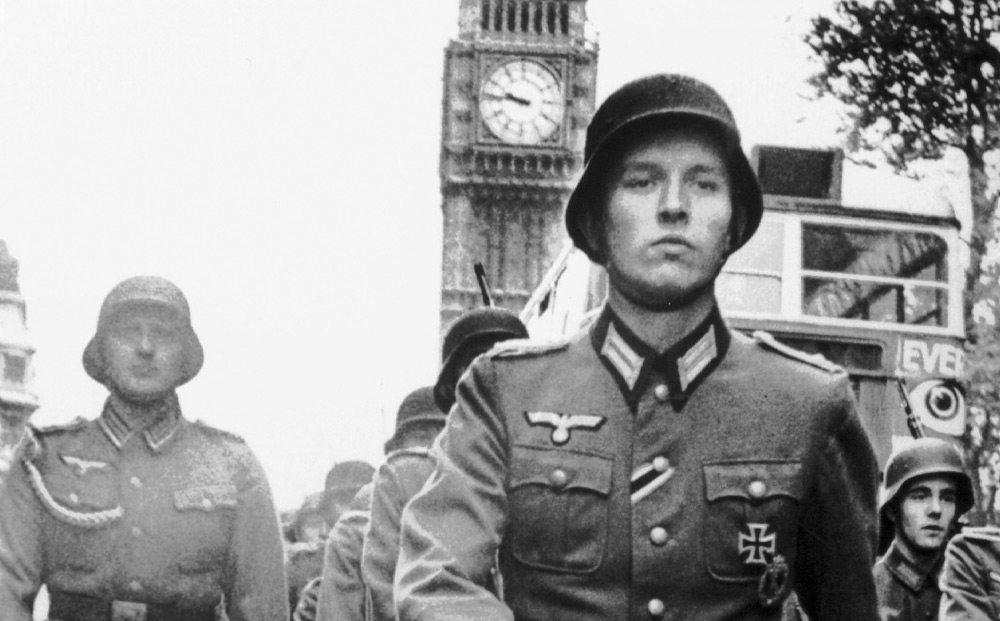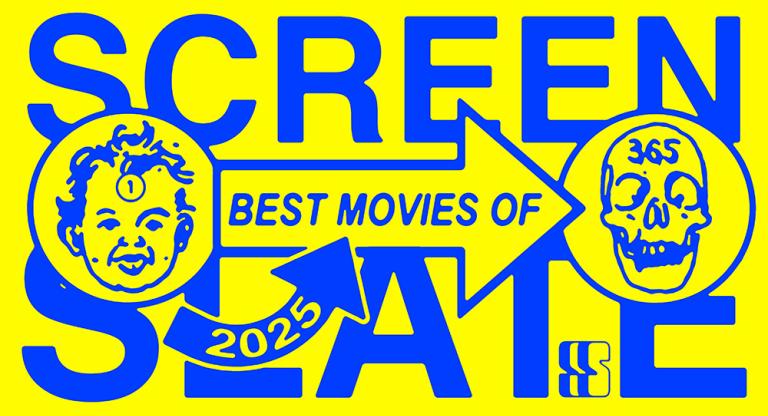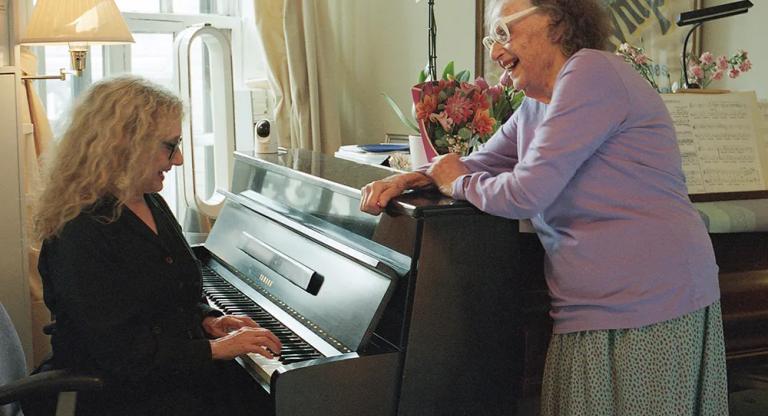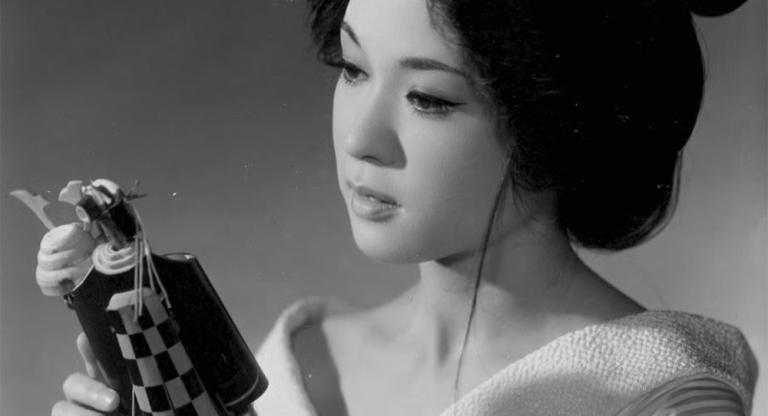“The Nazis Are Here in a Boy’s Film!” blared the Daily Mail headline for a story about a Sunday morning film shoot in London’s Trafalgar Square in the Spring of 1956. 18-year-old Kevin Brownlow, using a 16mm camera and working with a technical adviser who happened to be a former Nazi sergeant, was filming scenes of a rally featuring actors wearing German military outfits. With virtually no money, they were setting out to make a feature film imagining an England that had lost the battle of Dunkirk and was occupied by Hitler’s army.
With a miniscule budget that allowed for only very sporadic filming, it took eight years for Brownlow and co-director Andrew Mello to complete the film. To achieve true realism, and gain insight into the thinking and methods of actual fascists, Brownlow and Mello enlisted the help of volunteers, including military buffs, former Nazis, and present-day extreme right-wing National Socialists, who provided authentic uniforms, weapons, and tanks as props, and also performed in the film. Impressive in its realism, and horrifying in its portrayal of how a great democracy could accept fascist rule, It Happened Here feels timely today for all the wrong reasons.
It is a film that attempts to understand fascism while implicitly condemning it. Driving Brownlow’s willingness during production to listen to and involve people he violently disagreed with was his compulsion for historical accuracy and his desire to let the Nazi characters indict themselves with their own words. In the film’s most disturbing sequence, Colin Jordan, the actual leader of the British National Socialist movement, goes on an unabashed anti-semitic rant. This appalling seven-minute scene was cut by the film’s distributor, United Artists, who feared they would be attacked for giving exposure to Jordan’s views. Brownlow retorted that “the implicit anti-Nazi bias of the whole film is surely obvious.” It wasn’t until the late 1990s that Brownlow regained the rights to the film and restored this key scene.
This audacious film, as convincing as it is far-fetched, was admired by Stanley Kubrick, who provided Brownlow with unused 35mm film from his Dr. Strangelove shoot, and by Tony Richardson, who helped secure the modest funding needed to finish it. Considering its tiny budget, the film is surprisingly accomplished. It’s also the debut film of cinematographer Peter Suschitzky (best known for shooting most of David Cronenberg’s films, as well as The Empire Strike Back and The Rocky Horror Picture Show). His crisp and beautifully textured black-and-white photography gives the film a lustrous beauty that transcends its documentary style. Brownlow’s dynamic editing reflects his passionate interest in silent cinema, particularly his life-long love for Abel Gance’s Napoleon (1927), which he would go on to restore.
But for all of its intelligence, craft, and authenticity, what really makes It Happened Here work on a deeply emotional level is the amazing lead performance from Pauline Murray as the protagonist, a nurse named Pauline, who at first joins with the occupying Nazis, thinking it will be the best way to serve people who need medical help. A real-life nurse who had only appeared briefly in a 1948 Danish film, Murray gives an understated but riveting performance worthy of a Bresson film. Murray herself was horrified by the rushes of her performance, writing to Brownlow, “I honestly feel the lack of expression on my face is disastrous and could ruin the whole thing for you.” In the obituary that Brownlow wrote for The Independent, he said, “Fortunately, we could see what she couldn’t… that in her restraint lay her strength. For Pauline Murray was the film. And as it depended on her performance, we grew to depend on her.”
The film was rejected for the 1965 New York Film Festival, but did have a theatrical run the following summer in New York at the Little Carnegie. The New York Times critic Bosley Crowther praised the film and wrote that “the acting by unfamiliar people is beautifully natural and restrained, particularly that of Pauline Murray… through her human and subtle generation of an ungrudging sympathy, one becomes involved in her dilemma and is caught up all the way in the despair, uncertainty and terror of her experiences.” The convincing way that the film shows us how Pauline can at first accept the fascist regime before awakening to its horrors, is the heart of a film that asks its viewers how they would react if it happened here. Though critically acclaimed, the film’s commercial failure and controversial approach short-circuited Brownlow’s directorial ambitions. Thankfully, he quickly went on to forge another legendary career, now being celebrated at Film Forum, as a film historian and champion of preservation and restoration.
It Happened Here screens this afternoon, October 25, and throughout next week, at Film Forum as part of the series “Kevin Brownlow.”



